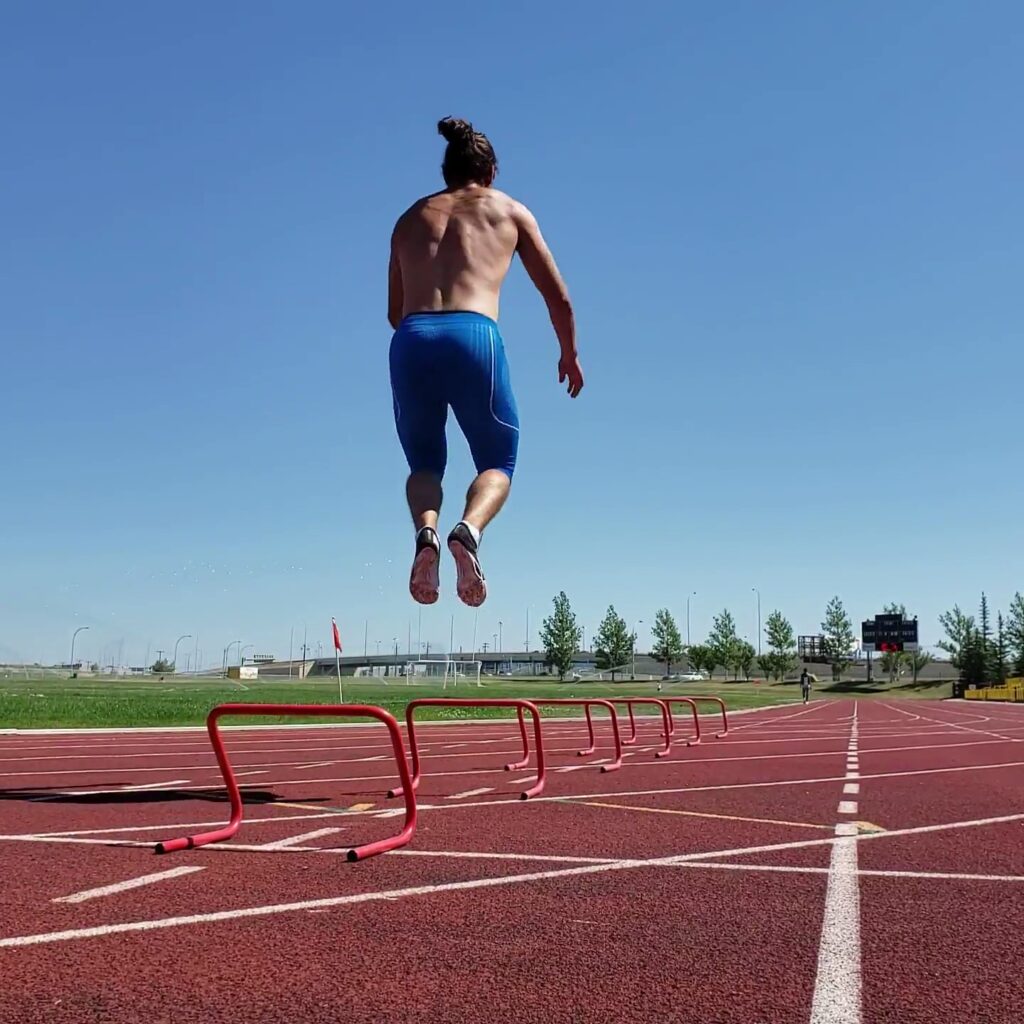If you haven’t already, review the previous article for a quick refresher on the taxonomy of Plyometrics and the building blocks required for it.
To maximize the return of Plyometrics on performance, three characteristics need to be optimized:
- Elastic Energy Recoil
- Stretch Reflex Potentiation
- Central Nervous System Stimulation
Elastic Energy Recoil
The muscle-tendon unit’s properties dictate the generation of the SSC. During the eccentric loading of muscles, energy is absorbed and transferred to the tendons and muscles, which can be utilized in enhanced muscle shortening if used immediately.
We need three critical factors for successful execution to enhance muscle shortening to use this stored elastic energy properly.
The external force impact is sufficiently sharp to increase the strain within the muscle(s) rapidly
- The sharpness can also view this as how stiff the limb is on impact.
-
- The stiffer the limb, the less force is lost to dissipation – that’s not to say be stiff-as-a-board, but don’t be lazy on impact and have intent.
- Think of an old versus new resistance band. The old band is worn and has lost some ability to retain its shape, while the new one snaps back when you stretch it.
- Be like the new band!
The drop height (either the athlete or implement) must be sufficient to load and store elastic energy in the tendons
- Box height for depth drops to vertical jumps, med ball drop height for dynamic chest presses, or height of an athlete while bounding/hopping.
- Too low you don’t store enough energy, too high you have too much energy, and you can’t change directions.
A short time from the eccentric to concentric phases.
- too short or too long will impair the SSC.
- For sprinting (ground contact time of ~0.1s), bounding runs (ground contact time of ~0.22s) would be applicable to improve elastic recoil.
- Exercises closer to the same coupling time will provide a more specific stimulus.
- However, movements that would have too long of ground contact times (depth drops, barbell jumps, repeated long jumps, skipping for height, etc.) would not benefit the development of elastic energy recoil.
- We’ll cover what they do help in subsequent articles.
Once these aspects of execution are understood, now we can identify two ways to improve the elastic energy recoil.
-
Adjusting the execution technique of the movement of interest to increase the efficiency of the SSC.
- Going back to sprinting, running drills, bouncy/springy runs or hops with minimal height are simple ways to refine the technical execution.
-
Decrease the coupling time of the SSC movement of interest.
- Now that the movement is more refined in coordination, now it’s time to reduce the time between the eccentric and concentric actions.
- Bounding runs (30-50m) are an excellent way to apply this to sprinting.
- Not big powerful bounds but more along the lines of “light and floaty” running with low ground contact time.
-
For both methods, repetitions are low and controlled for execution. No sense in doing more when the intention is lost.
-
- 2-4 sets of 3-5 repetitions per leg with full recovery (1:60 work to rest ratio).
By: Troy Wilson, BScKinH, MScKin, PKin, Team Canada Athlete and RockTape Ambassador
